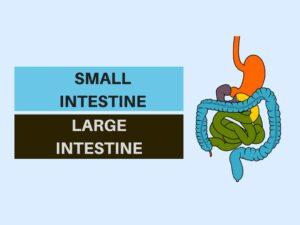The Difference Between Small Intestine and Large Intestine
Introduction
The digestive system is a complex network of organs that work together to break down food and absorb nutrients. Two key players in this process are the small intestine and large intestine. In this article, we will explore the characteristics, functions, and differences between these two vital components of the digestive system.
What is the Small Intestine?
The small intestine is a long, narrow tube that connects the stomach to the large intestine. It is approximately 20 feet in length and consists of three sections: the duodenum, jejunum, and ileum.
Examples of Small Intestine
– Duodenum: The duodenum is the first part of the small intestine and receives partially digested food from the stomach.
– Jejunum: The jejunum is the middle section of the small intestine and is responsible for the absorption of nutrients.
– Ileum: The ileum is the final section of the small intestine and connects to the large intestine.
Uses of Small Intestine
– Absorption of Nutrients: The small intestine plays a crucial role in the absorption of nutrients from digested food.
– Secretion of Enzymes: It secretes digestive enzymes that further break down food particles.
– Transportation: The small intestine transports digested food to the large intestine for further processing.
What is the Large Intestine?
The large intestine, also known as the colon, is a wider and shorter tube compared to the small intestine. It is approximately 5 feet long and consists of four sections: the cecum, ascending colon, transverse colon, descending colon, and sigmoid colon.
Examples of Large Intestine
– Cecum: The cecum is a pouch-like structure at the beginning of the large intestine.
– Ascending Colon: The ascending colon moves upward from the cecum on the right side of the abdomen.
– Transverse Colon: The transverse colon extends horizontally across the abdomen.
– Descending Colon: The descending colon moves downward on the left side of the abdomen.
– Sigmoid Colon: The sigmoid colon is an S-shaped section that connects to the rectum.
Uses of Large Intestine
– Water Absorption: The large intestine absorbs water from the undigested food, helping to maintain fluid balance in the body.
– Formation of Feces: It aids in the formation of feces by absorbing electrolytes and compacting waste.
– Gut Microbiota: The large intestine houses a diverse population of bacteria that assist in the breakdown of complex carbohydrates.
Differences Table
| Difference Area | Small Intestine | Large Intestine |
|---|---|---|
| Length | Approximately 20 feet | Approximately 5 feet |
| Sections | Duodenum, jejunum, ileum | Cecum, ascending colon, transverse colon, descending colon, sigmoid colon |
| Digestive Function | Primary site of nutrient absorption | Water absorption and formation of feces |
| Shape | Narrow and long | Wider and shorter |
| Muscle Features | Has circular and longitudinal muscles | Contains bands of muscle fibers called taeniae coli |
| Blood Supply | Supplied by the superior mesenteric artery | Supplied by the inferior mesenteric artery |
| Involvement in Digestion | Secretes digestive enzymes | Home to gut microbiota that aid in digestion |
| Peristalsis | Performs intense peristalsis for efficient absorption | Performs slower peristalsis for water absorption |
| Location | Connected to the stomach | Connected to the small intestine |
| Contents | Partially digested food and digestive juices | Undigested food, water, electrolytes, and gut microbiota |
Conclusion
In summary, the small intestine and large intestine are both essential components of the digestive system. While the small intestine is primarily responsible for nutrient absorption, the large intestine focuses on water absorption and the formation of feces. They differ in terms of length, sections, shape, muscle features, blood supply, involvement in digestion, peristalsis, location, and contents.
People Also Ask
Q: What happens if the small intestine is damaged?
A: Damage to the small intestine can lead to malabsorption of nutrients, causing nutrient deficiencies and digestive issues.
Q: Is the large intestine longer than the small intestine?
A: No, the small intestine is longer than the large intestine.
Q: Can you live without your large intestine?
A: Yes, it is possible to live without the large intestine by undergoing a procedure called a colectomy.
Q: How long does it take for food to pass through the small and large intestines?
A: On average, it takes around 4-6 hours for food to pass through the small intestine and 12-48 hours for it to pass through the large intestine.
Q: Can the small intestine regenerate if damaged?
A: Yes, the small intestine has the ability to regenerate its lining if damaged or injured.
Remember to consult a healthcare professional for personalized medical advice regarding your digestive health.


